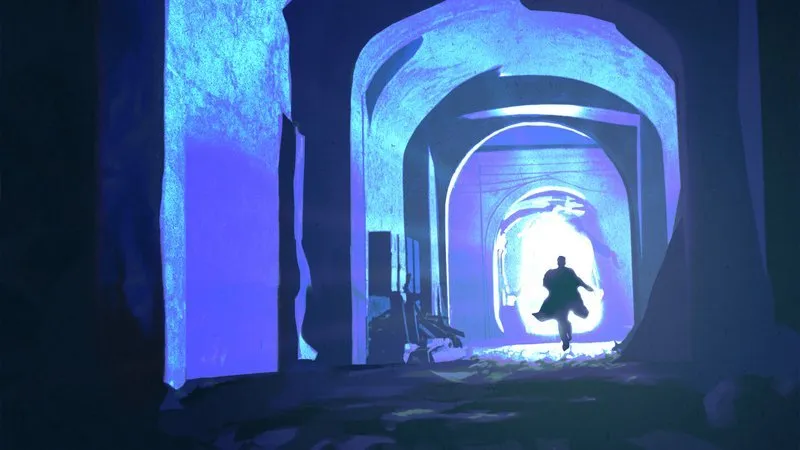
Cinematic Storytelling 
Discover the fundamentals of Cinematic Storytelling ▼
ADVERTISEMENT
Course Feature
![]() Cost:
Cost:
Free
![]() Provider:
Provider:
ThaiMOOC
![]() Certificate:
Certificate:
Paid Certification
![]() Language:
Language:
English
![]() Start Date:
Start Date:
On-Demand
Course Overview
❗The content presented here is sourced directly from ThaiMOOC platform. For comprehensive course details, including enrollment information, simply click on the 'Go to class' link on our website.
Updated in [May 19th, 2023]
Craig Good, CCA Instructor and veteran of Lucasfilm and Pixar, will be teaching Cinematic Storytelling, an introduction to the methods of cinematic storytelling. This course will focus on visual grammar and techniques, as well as story structure and how to develop written or spoken ideas into a clear dramatic narrative arc. Students will also learn how to edit and juxtapose images to create a clear and emotionally engaging result for live action film and animation. Additionally, the course will cover the importance of collaboration and the ability to show work in progress, giving and getting notes from peers, to make everybody’s work better.
[Applications]
Students who complete this course will have a better understanding of cinematic storytelling and the tools necessary to create a compelling narrative. They will be able to apply their knowledge to create stories for film, animation, and other visual media. Additionally, they will have the skills to collaborate with others and give and receive feedback in order to create the best possible story.
[Career Paths]
1. Cinematographer: Cinematographers are responsible for the visual look of a film, from the lighting to the camera angles. They work closely with the director to create the desired look and feel of the film. With the increasing popularity of streaming services, cinematographers are in high demand to create visually stunning content.
2. Film Editor: Film editors are responsible for assembling the footage into a cohesive narrative. They work with the director to create the desired pacing and tone of the film. With the rise of digital editing tools, film editors are able to create more complex and visually stunning films.
3. Visual Effects Artist: Visual effects artists are responsible for creating the special effects in a film. They use a variety of software and techniques to create realistic and believable effects. With the increasing popularity of CGI and motion capture, visual effects artists are in high demand to create more realistic and immersive effects.
4. Animation Artist: Animation artists are responsible for creating the animated sequences in a film. They use a variety of software and techniques to create realistic and believable animations. With the increasing popularity of 3D animation, animation artists are in high demand to create more complex and visually stunning animations.
[Education Paths]
1. Bachelor of Arts in Film and Television: This degree path provides students with a comprehensive understanding of the film and television industry, including the history, theory, and practice of filmmaking. Students will learn the fundamentals of cinematography, editing, and production, as well as the business and legal aspects of the industry. Developing trends in this field include the use of new technologies such as virtual reality and augmented reality, as well as the increasing importance of digital media and streaming services.
2. Master of Fine Arts in Film and Television: This degree path provides students with an advanced understanding of the film and television industry, including the history, theory, and practice of filmmaking. Students will learn advanced techniques in cinematography, editing, and production, as well as the business and legal aspects of the industry. Developing trends in this field include the use of new technologies such as virtual reality and augmented reality, as well as the increasing importance of digital media and streaming services.
3. Bachelor of Arts in Animation: This degree path provides students with a comprehensive understanding of the animation industry, including the history, theory, and practice of animation. Students will learn the fundamentals of animation, character design, and storyboarding, as well as the business and legal aspects of the industry. Developing trends in this field include the use of new technologies such as motion capture and 3D animation, as well as the increasing importance of digital media and streaming services.
4. Master of Fine Arts in Animation: This degree path provides students with an advanced understanding of the animation industry, including the history, theory, and practice of animation. Students will learn advanced techniques in animation, character design, and storyboarding, as well as the business and legal aspects of the industry. Developing trends in this field include the use of new technologies such as motion capture and 3D animation, as well as the increasing importance of digital media and streaming services.
Course Provider

Provider ThaiMOOC's Stats at AZClass
Discussion and Reviews
0.0 (Based on 0 reviews)
Explore Similar Online Courses

Drones for Agriculture: Prepare and Design Your Drone (UAV) Mission

Statistical Inference for Estimation in Data Science

Python for Informatics: Exploring Information

Social Network Analysis

Introduction to Systematic Review and Meta-Analysis

The Analytics Edge

DCO042 - Python For Informatics

Causal Diagrams: Draw Your Assumptions Before Your Conclusions

Whole genome sequencing of bacterial genomes - tools and applications

Visual Storytelling for Film and Video Games

ATA: Constructing a Story - Advanced Visual Storytelling


Start your review of Cinematic Storytelling